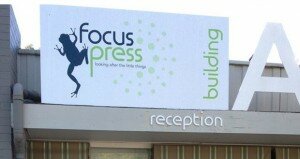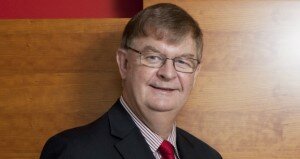Six print managers have undergone the LMA Challenge of Leadership course, digging deep to make changes in their professional and personal lives with spin offs for their companies including six-figure savings for Sydney’s Look Print.
Peter Seaton, facilitator and coach of the 12-month course, says the programme helps managers develop their skills and continue to drive improvements at work and at home.
He says, “Goal setting leads to change in attitudes and behaviour, and improvements in performance and results. We set up some win-win goals, acquiring some valuable skills on the way.
“We’re not only talking about success in terms of business, but also significant personal goals. We don’t want people to fill in the ballot paper about balance between life and work as poor.”
Peter Scott, managing director of Dainippon Screen Australia, says the course is helping him hone in on some major goals that will contribute directly to the bottom line, including setting up sales strategies and raising the company’s profile in new areas, such as the newspaper market.
Scott says, “Setting big picture goals on a timeline, and mapping out the steps you need to take achieve them, has made me more productive, more organised.
“For me this course has been mostly about confidence building as a manager, reinforcing that you are doing the right things, and having some tools to help you move forward.”
Steven Gamble, who began the course as Böttcher’s northern regional technical sales manager for NSW, Queensland, the ACT and NT, has now been promoted to national sales manager. He says the 12-month programme has helped him to become “100 per cent more efficient in what I do.”
He says, “My time management is 100 per cent better. I have clear and defined goals for myself and the team, a focus on the future, where we are going and how we are going to get there.”

L-r: Peter Seaton, LMA facilitator and coach; Mitch Mulligan, managing director of Böttcher Australia; Steven Gamble, national sales manager with Böttcher; and Bill Healey, CEO of the PIAA
Having worked his way up the ranks with Böttcher in his eight years with the company, Gamble says it was important to learn how to become a manager rather than just one of the boys – and for this communication is key.
He says, “In our team of six we have different personalities, they are all motivated and turned on by different things. The biggest thing was learning how to motivate them individually.
“I now have a management style which I think is open and progressive, which I think the guys like because they can come to me with anything and we can work through issues together.”
Sydney wide format firm Look Print put two of its managers through the course; traffic workflow manager Daniel Collins and fabrication manager Jason Clancy both drove changes in their departments that CEO David Leach says are having positive effects across the business.
Clancy undertook a project to improve the company’s freight management, saving Look Print a six-figure sum by mapping out the best delivery options. He says, “The goal was to maintain a 2.5 per cent or lower average freight expense by May 2014. There were a few ways to achieve this.
“We established relationships with courier companies with better rates. We developed new ways of packing that not only lowered weights, but turned out cheaper.
“We now consolidate freight headed for the same destination, and we’ve reduced the use of express couriers, late pickups and overnight deliveries.
“In the last couple of weeks we have hit our target, and the trend is going steadily where we want it to be. Return on investment is significant. We’re talking six figures. It’s massive.”

Darren Nellies, workflow and efficiency leader, and Jason Clancy, fabrication manager, with Look Print
Clancy also recommissioned a glue laminator that was gathering dust in the factory, with plans to open up new sales; cross-trained staff to make sure there are first and second backups within the department; and installed a whiteboard for communication between different shifts – a change he says was simple but very effective.
The fabrication manager says he’s keen to continue driving improvements in his department. He says, “This course has given me the tools and the drive to be an active member of this change. I’m looking forward to keeping this momentum going.”
In traffic workflow, Collins automated 70 per cent of setting up colour tests with a colour comrade programme – which he says has resulted in fewer interruptions, reworks and reprints.
Prepress staff also cross-trained across the equipment to improve flexibility. Collins says, “Sometimes you end up waiting for someone because that is the only person who can operate equipment or knows a process. If everyone can do it, you won’t have any downtime.”
Rachel Vergos, prepress team leader at STI Lilyfield, has also been busy saving time and money for the Sydney printer; ticking off no less than 40 focus goals during the course.
Fingerprinting STI’s three six-colour Komori presses for three stocks has been a teambuilding exercise, says Vergos, which will create a more productive and cost-effective department.
She says, “If we can fingerprint the press to our proofs, we can get them signed off faster. There are less press checks and fewer costs from remaking plates.
“One of the stocks we’re looking to fingerprint is quite expensive– at a dollar a sheet the fingerprinting could save us hundreds even in one job. We are increasing in our point of sale area, so this is where we need to be smart and on track.”

Peter Seaton, facilitator and coach with the LMA; Stephen De Lorenzo, managing director of STI Lilyfield; and Rachel Vergos, prepress team leader at STI Lilyfield
Vergos also conducted an upgrade of STI’s Adobe software, and worked on improvements to its Prinect workflow system. She says the sense of achievement is filtering through the workplace.
“We’re moving forward and the staff can see it too, they’re saying, what can we do, how can we be part of this? You’re on this rollercoaster and week by week walk away feeling accomplished.
“Before I was working late hours; I needed to be more focused, more productive. I came up with a list of three priority tasks to do in a day, so now every day I get those things done. I think that’s how you get to a satisfying work life balance.”
For Mark Easton, sales and marketing manager at family-owned label business Impresstik, the programme become a company-wide initiative he was able to share with his 45 colleagues during a time of change.
The company decided to diversify beyond high-end embellished labels for the wine and spirits industry to the wider markets of general food and beverage. To this end, it has brought in new equipment and technologies.
Easton says the sales team also achieved an objective to bring more local NSW reasonable-size accounts into its customer base. He says, “We reached the new business target we were aiming for within the first twelve months – and have already exceeded that by 20 per cent. That’s a 120 per cent improvement.”
CEO of Printing Industries Bill Healey says he is impressed by the achievements of the six managers, and transformational leadership courses are likely to be part of the $3.1m Future Print roll out, including 500 funded places in programmes like the LMA’s for businesses around the country.
He tells AP, “One of the strengths of this programme is it’s not just about change, it gives you the skills and capabilities to be a leader and manager. We need leadership in Australia to help us achieve what I think is a wonderful future for print.
“We recognise there’s a major transformation happening. There will be a vibrant, profitable and sustainable industry that emerges – but it will require knowledge, skills and dedication. The solutions that are going to make us a viable ongoing industry will require everyone to look above their own interests and collaborate in programmes like these.”
GO TO MORE AUSTRALIA NEWS
 Print | i-grafix.com | Print News | Packaging News | Wide Format news | Australia, New Zealand and Asia Print and Packaging news from Australia, New Zealand and Asia
Print | i-grafix.com | Print News | Packaging News | Wide Format news | Australia, New Zealand and Asia Print and Packaging news from Australia, New Zealand and Asia



